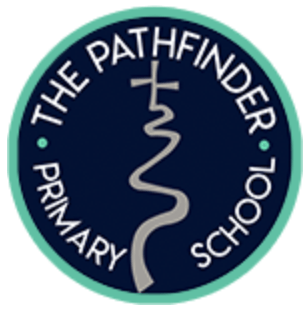
Phonics
Phonics
Sounds-Write – “a radical and effective alternative strategy for teaching reading”.
Intent:
At The Pathfinder, quality phonics is taught using the Sounds-Write approach – a linguistic phonics programme which underpins the teaching of reading and writing from the Early Years and follows children through their journey to Year 6. This embeds the early reading strategies taught in Reception and KS1 through to supporting children with their spelling strategies in KS2. Linguistic phonics is synthetic phonics but more!
Sounds-Write is effective in teaching pupils to read, spell and write because it starts from what all children know from a very early age – the sounds of their own language. Children are taught to understand the relationship between spoken language and written words from the beginning – they don’t learn sounds in isolation but understand the relationship between the sounds and their spellings. From there, it takes them in carefully sequenced, incremental steps and teaches them how each of the 44 or so sounds in the English language can be spelt. Linguistic phonics teaches the concept that all sounds can be spelled. We therefore do not promote silent letters, magic letters or memorising whole words by sight.
All teachers who deliver Sounds-Write sessions are trained to do so, following a comprehensive 6-week training programme. As well as this, we have many Learning Support Assistants across the school who have also undergone this same training – this ensures that we have a highly trained team to support the children’s progress throughout their primary education.
Implementation:
We value reading as a key life skill and make phonics a high priority. We want every child to learn to decode quickly and accurately so that reading becomes effortless. This is done through a comprehensive scheme of planning:
In the Early Years, children study the Initial Code. This teaches them the concept of one sound, one spelling. They begin with CVC words (consonant, vowel, consonant e.g. dog, mum, big). When all single-letter sound-spelling correspondences are taught, they discuss double consonant spellings (e.g. ss, ll, zz). Once children understand the concept of two letters representing on sound, they are exposed to spellings with two different letters (e.g. ch, sh, th). As the programme progresses, children learn to read and write words with a more complex structure.
In KS1, children learn the one, two, three and four letter spellings of sounds. This is called the Extended Code. They learn the concept that one sound can be represented by multiple spellings. For example, Unit 1 teaches the sound /ae/ which can be spelt <ai> in plain, <ea> in steak, <ay> in play and <a-e> in cake. They also learn the concept that one spelling can represent multiple sounds like <ou> can make the /oo/ sound as in ‘soup’, the /u/ sound in ‘trouble’ and the /ow/ sound as in ‘loud’.
In total, Sounds-Write teaches children 175 sound-spelling correspondences from Reception, through KS1 and beyond. Rather than moving on to spelling rules, which have many exceptions and contradictions, children learn and apply more sound-spelling correspondences (the Extended Code) in their reading and writing. Beyond KS1, children learn the etymology of words that supports them in their spellings.
Phonics is taught whole-class and any children who did not fully grasp the learning repeat the lesson/part of the lesson with a trained LSA. Children working below age-related expectations still join in with the whole-class phonics lesson and then receive additional phonics teaching focused on their stage of code knowledge. This approach ensures children catch up quickly and keep up.
Impact:
Children's understanding is regularly assessed by their teachers during the year and decodable books are given, read and monitored to check understanding and progress. Books are issued at a reading level appropriate to the child and 2 units behind the current in-class learning unit. This ensures children know the sounds that are presented to them and children can build fluency. The aim is that children are fluent readers by the end of KS1. Children can then focus on developing fluency and comprehension throughout the school.
Children at the end of Year 1 take part in a statutory Phonics Screening Check. The purpose of the Phonics Screening Check will be to confirm that all children have learned phonic decoding to an age-appropriate standard. Children who have not reached this level should receive extra support from their teachers and LSAs to ensure they can improve their decoding skills and will then have the opportunity to retake the Phonics Screening Check in Year 2.
